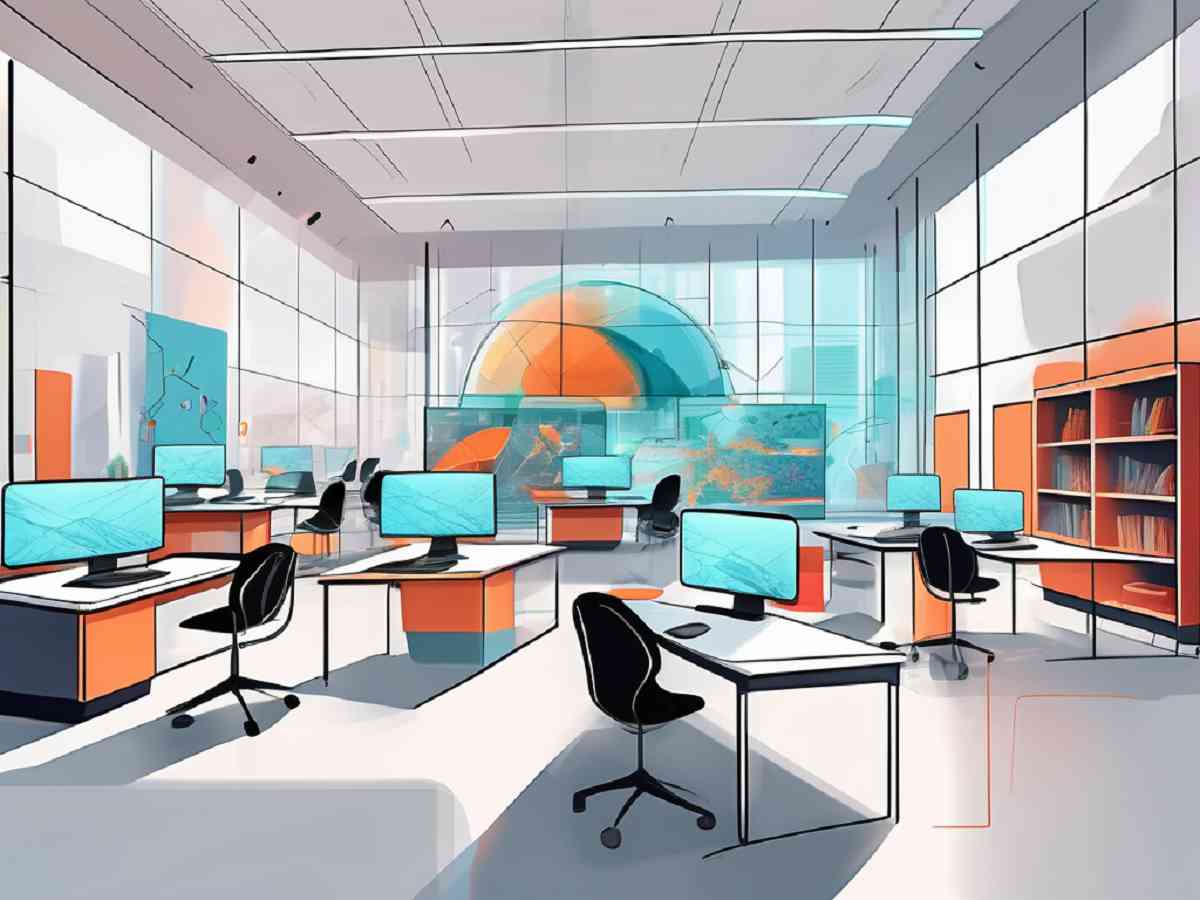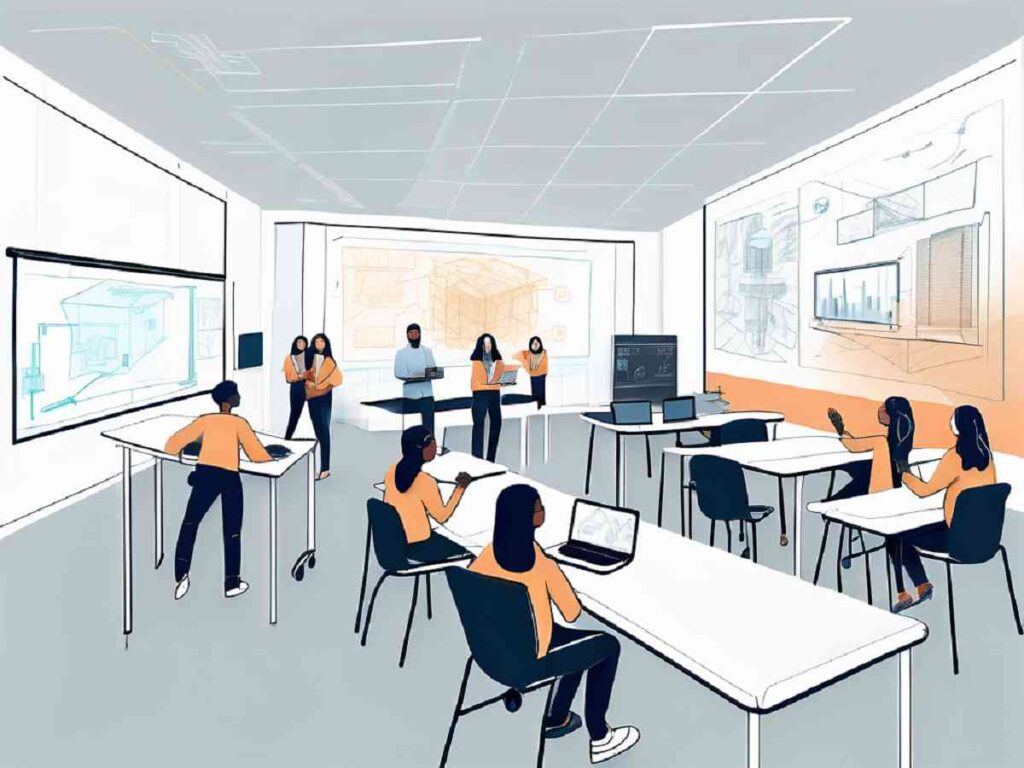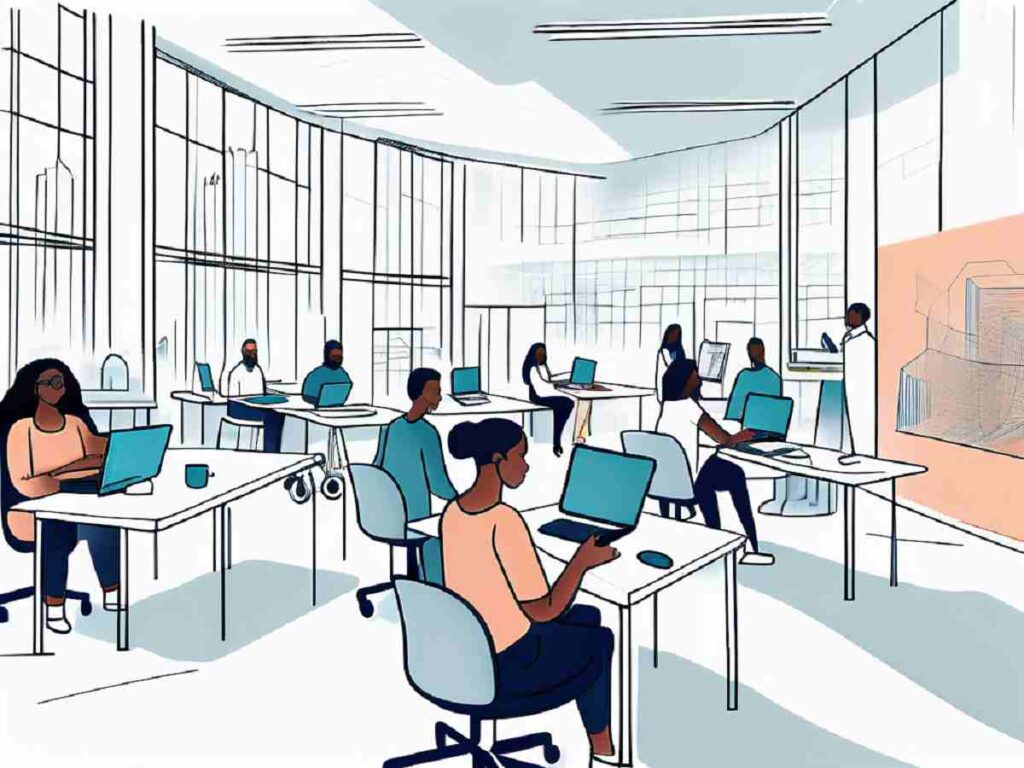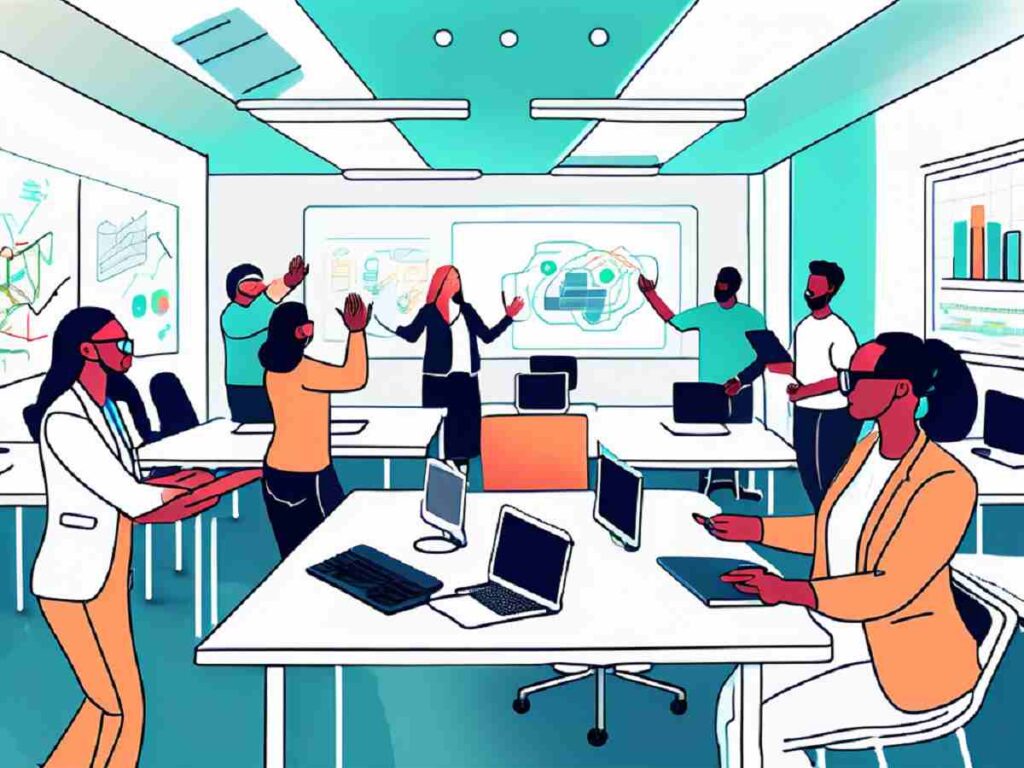
The innovative architecture of Ashcroft Technology Academy, reflecting its commitment to cutting-edge education.
Ashcroft Technology Academy is at the forefront of educational innovation, leveraging technology to create a dynamic learning environment for students. With an emphasis on integrating advanced technological tools in the classroom, the academy aims to prepare students for a rapidly evolving world. This article explores various aspects of technology in education, highlighting the transformative impact it has on learner engagement and success.
Innovative Learning Environments: How Technology Transforms Classrooms
In recent years, classrooms have undergone a significant transformation thanks to the integration of technology. Traditional learning methods are being replaced with innovative approaches that engage students more effectively. Smartboards, tablets, and interactive software are just a few examples of tools that facilitate collaborative learning experiences. These technologies not only make lessons more dynamic but also cater to various learning styles, ensuring that visual, auditory, and kinesthetic learners can all thrive in the same environment. For instance, students can participate in interactive simulations that bring complex scientific concepts to life, allowing them to visualize and manipulate variables in real-time.

Moreover, technology enables real-time feedback and assessment, allowing educators to adjust their teaching methods according to student needs. It’s not just about access to information; it’s about enriching the learning experience and empowering students to take charge of their education. With platforms that track progress and provide instant analytics, teachers can identify areas where students struggle and offer targeted support. This personalized approach fosters a growth mindset, encouraging students to view challenges as opportunities for improvement. Additionally, the use of gamification in educational apps motivates learners by incorporating game-like elements, making the process of acquiring knowledge both enjoyable and rewarding.
Furthermore, the rise of virtual and augmented reality in education is revolutionizing how students experience learning. Imagine a history lesson where students can virtually walk through ancient civilizations or a biology class where they can explore the human body in 3D. These immersive experiences not only enhance understanding but also stimulate curiosity and creativity. As students engage with content in such vivid ways, they are more likely to retain information and develop a deeper appreciation for the subject matter. The integration of these advanced technologies signifies a shift towards a more experiential form of education, where learning is not confined to textbooks but rather expanded to encompass the world around them.
Bridging the Digital Divide: Ensuring Access for All Students
Despite the benefits of technology in education, disparities still exist in many regions. The digital divide affects students’ access to vital educational resources, which can hinder their academic progress. Ashcroft Technology Academy is committed to ensuring that every student, regardless of their background, has access to the technology they need to succeed.

The academy addresses this issue by providing devices and high-speed internet access as part of its commitment to equity in education. By partnering with local organizations and utilizing grants, the academy works tirelessly to level the playing field for all students.
In addition to providing the necessary hardware and connectivity, Ashcroft Technology Academy also offers training sessions for both students and their families. These workshops are designed to enhance digital literacy skills, ensuring that students not only have access to technology but also the knowledge to use it effectively. By fostering an environment where technology is embraced, the academy empowers students to explore new learning opportunities and develop critical skills that are essential in today’s digital world.
Furthermore, the academy recognizes that the digital divide is not solely about access to devices and internet connectivity; it also encompasses the quality of educational content available online. To combat this, Ashcroft Technology Academy curates a wide range of high-quality, interactive learning resources that cater to diverse learning styles. By integrating these resources into the curriculum, the academy enriches the educational experience, making learning more engaging and accessible for all students, regardless of their socioeconomic status.
Empowering Educators: Tools and Training for Effective Teaching
For technology to be effective in the classroom, educators must be adequately trained in its use. Ashcroft Technology Academy invests heavily in professional development programs that equip teachers with essential skills. Workshops, webinars, and hands-on training sessions ensure that educators are proficient in the latest educational technologies. These programs not only focus on the technical aspects but also emphasize pedagogical strategies that integrate technology seamlessly into the curriculum, fostering a more interactive and dynamic learning environment.
Furthermore, providing teachers with access to educational tools such as Learning Management Systems (LMS) and instructional software enables them to design engaging lessons that cater to diverse learning styles. Empowered educators lead to more effective teaching, ultimately benefiting students. In addition to these tools, the academy encourages collaboration among teachers through peer mentoring and shared resources, creating a community of practice that enhances collective knowledge and skills. This collaborative approach not only boosts teacher confidence but also promotes innovative teaching methods that can transform the educational experience for students.
Moreover, the integration of data analytics into these educational tools allows educators to track student progress in real-time, enabling them to tailor their instruction to meet individual needs. By analyzing performance metrics, teachers can identify areas where students may struggle and adjust their teaching strategies accordingly. This data-driven approach not only enhances student outcomes but also empowers educators to make informed decisions about their instructional practices, fostering a culture of continuous improvement within the academy.
Student-Centered Approaches: Personalizing Learning with Tech
Personalized learning is at the heart of Ashcroft Technology Academy’s educational philosophy. By leveraging technology, teachers can create tailored learning experiences that cater to individual student needs. Adaptive learning platforms and personalized dashboards allow students to progress at their own pace and focus on areas where they require additional support. This individualized approach ensures that no student is left behind, as it identifies gaps in knowledge and provides targeted resources to help them succeed. Furthermore, teachers can monitor student progress in real-time, allowing for timely interventions and adjustments to learning plans as necessary.
Additionally, technology fosters student autonomy, encouraging learners to pursue their interests and explore topics that captivate them. This approach not only enhances engagement but also promotes a deeper understanding of the subject matter. With access to a wealth of online resources, students can delve into subjects beyond the standard curriculum, engaging in research projects, collaborative learning, and even virtual field trips that expand their horizons. Such opportunities not only make learning more relevant and exciting but also help students develop critical thinking and problem-solving skills as they navigate their educational journeys.
Moreover, the integration of technology in personalized learning environments cultivates essential 21st-century skills. Students are encouraged to collaborate with peers through digital platforms, fostering teamwork and communication skills that are vital in today’s interconnected world. Tools such as discussion forums, group projects, and peer feedback systems empower students to take ownership of their learning while building a supportive community. As they engage with diverse perspectives, they learn to appreciate different viewpoints and develop empathy, preparing them for future challenges in both academic and professional settings.
The Role of Artificial Intelligence in Modern Education
Artificial intelligence (AI) is revolutionizing the landscape of education. At Ashcroft Technology Academy, AI tools are utilized to analyze student performance data, providing insights that guide instructional strategies. AI-driven recommendations help educators identify students who may need extra assistance before they fall behind.
Moreover, AI-enhanced assessments offer personalized feedback, helping students understand their strengths and weaknesses. By incorporating AI into the learning process, the academy advances a more data-driven approach to education that maximizes student success.
In addition to performance analysis, AI facilitates adaptive learning environments where educational content is tailored to meet the individual needs of each student. For instance, platforms powered by AI can adjust the difficulty of tasks based on a student’s previous responses, ensuring that learners remain engaged and challenged at an appropriate level. This not only fosters a more inclusive atmosphere but also encourages a growth mindset, as students can progress at their own pace without the pressure of keeping up with their peers.
Furthermore, AI is enhancing administrative efficiency within educational institutions. By automating routine tasks such as grading and scheduling, educators can devote more time to direct interactions with students, fostering deeper relationships and mentorship opportunities. This shift allows teachers to focus on what they do best: inspiring and guiding their students, while AI takes on the heavy lifting of data management and analysis. As a result, the educational experience becomes richer and more personalized, paving the way for innovative teaching methods and collaborative learning environments.
Collaborating with Tech Companies: Building Partnerships for Success
To remain at the cutting edge of educational technology, Ashcroft Technology Academy actively collaborates with leading tech companies. These partnerships provide students with access to the latest software, hardware, and resources that enhance their learning experiences. By integrating advanced tools into the curriculum, students can engage with innovative technologies that are shaping the future of various industries. This exposure not only stimulates their creativity but also fosters critical thinking skills essential for problem-solving in a tech-driven world.

Furthermore, such collaborations often involve internships and project-based learning opportunities, allowing students to apply their knowledge in real-world settings. This not only enriches their education but also prepares them for future careers in technology-related fields. Students have the chance to work on actual projects, gaining valuable insights into the workings of tech companies and the challenges they face. These experiences can lead to mentorship opportunities, networking connections, and even job placements, significantly enhancing their employability upon graduation.
In addition to internships, Ashcroft Technology Academy frequently hosts workshops and seminars led by industry professionals. These events provide students with firsthand knowledge of emerging trends and skills that are in high demand. By interacting with experts, students can learn about the latest advancements in artificial intelligence, cybersecurity, and software development, equipping them with the tools necessary to thrive in an ever-evolving job market. Such initiatives not only bridge the gap between education and industry but also inspire students to pursue their passions in technology with confidence and ambition.
Measuring Success: Assessing the Impact of Technology on Learning Outcomes
Evaluating the effectiveness of technology in education is crucial for continuous improvement. At Ashcroft Technology Academy, various assessment tools and metrics are employed to measure the impact of technological integration on student learning outcomes. By analyzing data on student performance, engagement levels, and satisfaction rates, the academy can identify areas for enhancement.
These assessments also help in determining the most effective teaching practices and technologies, ensuring that the educational framework remains responsive to the evolving needs of students.
In addition to quantitative data, qualitative feedback from students and educators plays a vital role in this evaluation process. Surveys and focus groups are conducted regularly to gather insights into how technology influences classroom dynamics and individual learning experiences. This feedback not only highlights the strengths of current technological tools but also uncovers challenges that may not be immediately apparent through numerical data alone. By fostering an open dialogue around technology use, Ashcroft Technology Academy can adapt its strategies to better meet the needs of its diverse student body.
Furthermore, the academy actively collaborates with educational technology experts and researchers to stay abreast of the latest advancements in the field. Workshops and training sessions are organized to equip teachers with the skills necessary to effectively integrate new tools into their curricula. This professional development ensures that educators are not only proficient in using technology but are also able to leverage it to create engaging and interactive learning environments. As a result, students are more likely to develop critical thinking and problem-solving skills, preparing them for future academic and career challenges.
Preparing for the Future: Skills Students Need in a Tech-Driven World
The modern workforce demands a unique set of skills that blend technical knowledge with critical thinking and collaboration. Ashcroft Technology Academy prioritizes equipping students with these essential competencies. Through project-based learning and integrated technology projects, students develop valuable skills such as problem-solving, creativity, and digital literacy. This hands-on approach not only enhances their understanding of complex concepts but also fosters a sense of ownership over their learning process. By engaging in real-world challenges, students learn to navigate obstacles and adapt their strategies, which is crucial in today’s fast-paced environment.
In addition, exposure to emerging technologies prepares students for future career opportunities in fields that are rapidly evolving due to technological advancements. The academy emphasizes lifelong learning, encouraging students to remain current with technological trends and advancements. Workshops and guest lectures from industry professionals provide insights into the latest innovations and career paths, further igniting students’ passion for technology. Moreover, the curriculum integrates coding, data analysis, and artificial intelligence, ensuring that students not only understand these concepts but can also apply them in practical scenarios. This comprehensive approach to education not only prepares students for immediate job prospects but also instills a mindset of adaptability and resilience, essential traits for navigating the uncertainties of the future job market.
Challenges and Solutions: Overcoming Barriers to Technology Integration
While the integration of technology in education presents numerous benefits, it is not without challenges. Issues such as resistance to change, funding limitations, and technical glitches can hinder progress. Ashcroft Technology Academy actively addresses these barriers through strategic planning and stakeholder engagement.
Investing in infrastructure, providing ongoing training, and cultivating a culture of innovation within the school community are essential steps taken to overcome these obstacles. The academy fosters an environment where both educators and students feel supported in their technological endeavors, ultimately leading to successful integration.
Inspiring Innovation: Student Projects That Showcase Technological Creativity
Ashcroft Technology Academy encourages students to engage in innovative projects that demonstrate their understanding of technology. Through initiatives such as hackathons, coding clubs, and technology fairs, students have the opportunity to explore their creativity while applying their knowledge in practical ways.
These projects not only highlight student ingenuity but also cultivate teamwork and collaboration skills. The academy regularly showcases these projects, allowing students to gain recognition for their hard work and dedication to technological advancement.
Conclusion
The integration of technology at Ashcroft Technology Academy is a multi-faceted effort aimed at enhancing the educational experience. Through innovative learning environments, empowering educators, and ensuring equitable access to resources, the academy addresses the diverse needs of its students. By continuously assessing the impact of technology, fostering student-centered approaches, and prioritizing collaboration, Ashcroft Technology Academy is preparing students for successful futures in a tech-driven world.
FAQs
We utilize various technologies, including smartboards, tablets, adaptive learning software, and virtual reality tools to enhance the learning experience.
The academy provides devices and high-speed internet access as part of its commitment to bridging the digital divide.
Educators participate in ongoing professional development programs that include workshops, webinars, and hands-on training to enhance their technological proficiency.
We employ various assessment tools and metrics to analyze student performance, engagement, and satisfaction to evaluate the impact of technology on learning outcomes.
Yes, students are encouraged to join clubs, participate in hackathons, and engage in extracurricular activities that foster innovation and creativity in technology.




